 September 23, 2021 John E. Ross, KD8IDJ, Editor
| ||||||
ARRL, RSGB Announce Joint Events to Celebrate Centenary of Ham Radio Transatlantic Success ARRL and the Radio Society of Great Britain will jointly sponsor events to celebrate the achievement of transatlantic communications by radio amateurs 100 years ago. In December 1921, ARRL sent Paul F. Godley, 2ZE, as its representative to listen for amateur signals from North America during the Second Transatlantic Tests. Setting up his listening station in These successful transatlantic tests and the ones that followed spurred technological advances and new global wireless distance records. Several amateur radio operating events this year and next will commemorate the centenary of these significant milestones that heralded the dawn of two-way international amateur radio communication. ARRL and RSGB will activate special event stations for 6 hours (0200 - 0800 UTC) on December 12 for the 160-meter Transatlantic Centenary QSO Party. RSGB will activate GB2ZE from Scotland, with a team of stations from the GMDX Group sharing operating duties. ARRL will activate W1AW. The stations will operate only on CW. If transatlantic propagation holds up, the stations may continue to operate beyond 0800 UTC.
The GMDX Group of Scotland will award a quaich -- a traditional Scottish drinking cup representing friendship -- to the first stations in North America and the UK to complete contacts with both W1AW and GB2ZE during the QSO party. A commemorative certificate will be available for download. RSGB and ARRL are also organizing an international amateur radio marathon on the HF bands to commemorate transatlantic tests held between 1921 and 1923. The Transatlantic Centenary Marathon will take place in December 2022. The objective will be to mark these historic events by encouraging all radio amateurs to get on the air. Event details are pending. ARRL and RSGB have assembled a list of stations and groups that are also organizing events and activities to celebrate 100 years of amateur radio transatlantic communication. For more information, visit arrl.org/transatlantic and rsgb.org/transatlantic-tests. The sites also include links to many previously published articles and presentations covering the historic tests. Additional events and commemorations include:
Clear Frequencies Requested for Possible Nicaragua Earthquake Traffic IARU Region 2 Emergency Coordinator Carlos Alberto Santamaría González, CO2JC, has requested that radio amateurs in Central America avoid 7098 and 7198 kHz in the wake of an earthquake at 0957 UTC Wednesday in Nicaragua. The US Geological Survey (USGS) said the magnitude 6.5 earthquake has also affected Belize, Costa Rica, El Salvador, Guatemala, and Honduras. The earthquake was followed by another 4.0 temblor and other aftershocks of less intensity, as confirmed by Juan de la Cruz Rodríguez Pérez, YN1J, President and National Emergency Coordinator of the Club de Radioexperimentadores de Nicaragua The earthquake occurred offshore some 60 miles from Chinandega and approximately 52 miles southwest of the resort town of Jiquilillo, Nicaragua. The USGS said the quake occurred in the North Pacific at a depth of approximately 20 miles. According to the Nicaraguan Institute for Territorial Studies, the event was related to the tectonic processes of the collision between the Cocos and Caribbean tectonic plates. Emergency communicator Juan de la Cruz, YN1J, requested the frequency protection. No tsunami warning has been issued, and there have been no immediate reports of damage. According to the USGS, "Little or no landsliding is expected, but some landslides could have occurred in highly susceptible areas." And, "The number of people living near areas that could have produced landslides in this earthquake is low, but landslide damage or fatalities are still possible in highly susceptible areas. This is not a direct estimate of landslide fatalities or losses." Radio Amateurs on Standby Following Volcanic Eruption in the Canaries The Cumbre Vieja volcano on La Palmas in Spain's Canary Islands ARRL Podcasts Schedule
The On the Air and Eclectic Tech podcasts are sponsored by Icom. Both podcasts are available on iTunes (iOS) and Stitcher (Android) as well as on Blubrry -- On the Air | Eclectic Tech. Registration Opens for US Amateur Radio Direction Finding Championships Registration is now open for the 2021 US and IARU Region 2 Championships of Amateur Radio Direction Finding (ARDF), set for October 13 - 17. Competition venues will be near Asheboro, North Carolina. Postponed from 2020, these championships will be conducted in accordance with CDC COVID-19 guidelines. "The US ARDF Championships are an ideal opportunity to watch and Wednesday, October 13, will be a model event for equipment testing and a competitor briefing. Thursday, October 14, will be devoted to the Sprint championship, a short course with 12-second fox transmissions instead of the usual 60 seconds. Classic 2-meter and 80-meter competitions will take place on Friday and Sunday. Between the days of classic competitions will be Foxoring, a combination of radio direction-finding and classic orienteering, held on Saturday morning. An outdoor pizza picnic will be held on Saturday evening. Presentation of medals for foxoring, sprint, and Friday's classic event take place at the picnic. Awards for Sunday's Classic competition will be presented immediately after the competition.
Three optional practice days are planned for Sunday through Tuesday, October 10 - 12, just prior to the championships. A practice event on Sunday in Chapel Hill, North Carolina, will provide the experience of a full ARDF course in a friendly environment, with the clock as the only opponent. The practices on Monday and Tuesday will be held in Durham, North Carolina, and will offer informal sessions in which the participants help with setting the transmitters in the woods. Experienced radio orienteers and event organizers from the Backwoods Orienteering Klub (BOK) will organize the 2021 US and IARU Region 2 Championships. An email reflector is available for questions and answers with the organizers, as well as for coordinating transportation and arranging equipment loans. -- Thanks to Joe Moell, K0OV Read an expanded version. ARRL Learning Network Webinars
ARRL members may register for upcoming presentations and view previously recorded Learning Network webinars. ARRL-affiliated radio clubs may also use the recordings as presentations for club meetings, mentoring new and current hams, and discussing amateur radio topics. Working the Pileup, presented by Ron Delpiere-Smith, KD9IPO / Tuesday, October 5, 2021 @ 1:00 pm EDT (1700 UTC) Ron Delpiere-Smith, KD9IPO, Vice President of the Chicago Suburban Radio Association and an ARRL Assistant Section Manager in Illinois, will offer an enlightening discussion on working a pileup from both sides of the contact. Whether your interest lies in ARRL Field Day, contesting, special events, or rare DX, this is a must-see presentation. Ron will discuss search-and-pounce and running techniques, when to use them, and some tips on working them to your advantage. The ARRL Learning Network schedule is subject to change. Open-Source Amateur Satellite Work Not Subject to Export Administration Regulation CEO Michelle Thompson, W5NYV, reports that Open Research Institute (ORI) received an advisory opinion from the US Commerce Department Bureau of Industry and Security (BIS) on September 2, confirming that public internet posts regarding open-source "This is a significant regulatory success for open-source amateur satellite work and open source in general," Thompson said. In a later post on the ORI site, Thompson said ITAR and EAR have had a dramatic effect on both commercial and amateur satellite work since the 1990s. "The regulations are blamed for a significant decline in US market share for satellite systems and halted highly successful international amateur collaborations," she wrote.
Open-source work that is published as it is created and is freely available to the general public at no cost is not subject to ITAR or EAR, Thompson said. ORI's work was funded by ARDC, with legal assistance provided by Thomsen and Burke LLP. All documents and links to presentations about the work are available. "Thank you to those who have supported and assisted ORI during the many stages of this successful regulatory endeavor," Thompson said. "ORI will build upon this work to advance the aims and purposes of open-source amateur satellites." Visit the ORI website's "Getting Started" page to get involved. Read an expanded version. Amateur Radio in the News ARRL Public Information Officers, Coordinators, and many other member-volunteers help keep amateur radio and ARRL in the news.
Share any amateur radio media hits you spot with us. IARU Region 3 Considers Significant Expansion of HF Digital Segments The IARU Region 3 (Asia) online conference hosted by Thailand's The changes proposed include a significant expansion of digital mode segments. These revisions address several areas, including global HF amateur band plan segment harmonization. Other factors include:
Documents are available from the Region 1 Conference website. Special event station HS18IARU was on the air during the conference. Announcements
AWA Video: SSB was Slow to Catch On as a Ham Radio Mode Hams are often early adopters of new technology, such as FT8, but this was not the case with single sideband (SSB) amplitude modulation. First referenced in Major General George Squier's 1911 patent that had nothing to do with RF applications, SSB didn't really catch on as a popular ham radio phone mode until the 1960s. Antique Wireless Association (AWA) museum curator Ed Gable, K2MP, recounted "The History of Single Sideband" as part of the inaugural "AWA Shares" program, presented on August 19. Gable described Squier as an "early idea man" in the history of SSB at a time when hams had hardly adopted AM in any form. As Gable explained, John Renshaw Carson built on Squier's patents to define the principles of SSB radio transmission theory, using a balanced modulator and filters. AT&T went all in with SSB, basing its first long-haul telephone system on the technology. Its SSB voice service to Europe, which kicked off in 1923, lasted for more than 3 decades. A receiving site in Scotland took advantage of Beverage antennas put in place for the ARRL transatlantic tests.
The mood began to change after World War II, though. In 1948, Oswald Villard, W6QIT, engineered the airing of SSB signals via Stanford University's W6YX, re-introducing the mode to a burgeoning and more technically savvy post-war ham community that included a lot of veterans. A 1950 GE Ham News article by Don Norgaard, W2KUJ, described plans for a 5 W, three-tube SSB transmitter he dubbed "The SSB Jr."
Expanding on this, Central Electronics' Wes Schum, W9DYV, built the first SSB exciter, the 10A, in 1952, and it became the company's first product, spawning a series of successor products that included a VFO based on a modified BC-458 military surplus transmitter, an "SSB slicer" for receiving, and even a linear. SSB equipment was neither inexpensive nor accessible, however. "Cheap and Easy S.S.B." by Anthony Vitale, W2EWL, which appeared in QST in 1956, spoke to hams' attitudes, helping to advance the adoption of SSB among radio amateurs. Byron Goodman, W1DX, addressed receiver improvements with his QST article, "The Product Detector."
In the same decade, General Curtis LeMay, K3JUY/K4RFA, promoted the advantages of SSB to the military, heralding a phase-out of AM as the dominant voice technology. Many hams were not convinced of SSB's advantages, deriding the signals as sounding like Donald Duck. Adoption didn't really take off until the Collins KWM-1 came along in 1957. It was the first SSB transceiver to share receiver and transmitter circuitry. Heathkit, Viking, and B&W produced SSB adapters for use with current AM gear. Other manufacturers including National and Swan came along to further boost adoption of the mode, and it wasn't that many years before SSB eclipsed AM as the predominant voice mode on the HF bands. The K7RA Solar Update Tad Cook, K7RA, Seattle, reports: Last week, we reported a big increase in solar activity with the daily sunspot number reaching 124, but by the end of that week, all the sunspots had disappeared. The sun was blank for several days, but then, sunspots returned on September 19. Average daily sunspot numbers were 28.7 this week, below the 58.3 average reported a week earlier. Average daily solar flux was down by nine points, from 87.4 to 78.4.
Predicted solar flux for the next month is 90 on September 23; 95 on September 24 - 25; 98 and 95 on September 26 - 27; 90 on September 28 - 29; 84 on September 30 - October 5; 82 on October 6; 80 on October 7 - 8; 78 on October 9 - 11; 75 on October 12 - 20; 80 on October 21 - 22; 82 on October 23 - 25; 84 and 82 on October 26 - 27, and 84 on October 28 - November 1. Predicted planetary A index is 12, 8, and 15 on September 23 - 25; 8 on September 26 - 27; 12 on September 28; 10 on September 29 - 30; 5 on October 1 - 3; 8 and 12 on October 4 - 5; 5 on October 6 - 9; 12 on October 10; 5 on October 11 - 17; 8 on October 18 - 19; 10, 8, and 12 on October 20 - 22; 10 on October 23 - 24, and 5 on October 25 - 30. The northern autumnal equinox occurred at 1920 UTC on September 22, which means Earth is bathed in approximately equal amounts of solar radiation over the Northern and Southern hemispheres, always a good sign for HF propagation. Here is a new forecast from Tamitha Skov, WX6SWW. Sunspot numbers for September 16 through 22 were 0, 0, 11, 13, 51, 50, and 76, with a mean of 28.7. The 10.7-centimeter flux was 73.2, 73.4, 73.7, 75, 80, 84.9, and 88.5, with a mean of 78.4. Estimated planetary A indices were 3, 24, 11, 3, 3, 8, and 12, with a mean of 9.1. Middle latitude A index was 3, 19, 14, 2, 4, 6, and 11, with a mean of 8.4. A comprehensive K7RA Solar Update is posted Fridays on the ARRL website. For more information concerning radio propagation, visit the ARRL Technical Information Service, read "What the Numbers Mean...," and check out the Propagation Page of Carl Luetzelschwab, K9LA. A propagation bulletin archive is available. For customizable propagation charts, visit the VOACAP Online for Ham Radio website. Share your reports and observations. Just Ahead in Radiosport
For more information, visit the ARRL Contest Calendar. Upcoming ARRL Section, State, and Division Conventions Some conventions and hamfests may have been canceled or postponed due to the coronavirus pandemic. Check the calendar of canceled events on the ARRL website.
Find conventions and hamfests in your area. ARRL -- Your One-Stop Resource for
Subscribe to...
Free of charge to ARRL members...
| ||||||
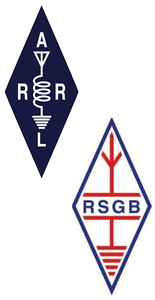 Ardrossan, on the west coast of Scotland, Godley received the signals of more than 2 dozen US amateur radio stations, the first on December 12 (UTC) from 1BCG in Connecticut, operated by members of the Radio Club of America. The message read: "Nr 1 NY ck 12 to Paul Godley, Ardrossan, Scotland. Hearty Congratulations. (Signed) Burghard Inman Grinan Armstrong Amy Cronkhite."
Ardrossan, on the west coast of Scotland, Godley received the signals of more than 2 dozen US amateur radio stations, the first on December 12 (UTC) from 1BCG in Connecticut, operated by members of the Radio Club of America. The message read: "Nr 1 NY ck 12 to Paul Godley, Ardrossan, Scotland. Hearty Congratulations. (Signed) Burghard Inman Grinan Armstrong Amy Cronkhite."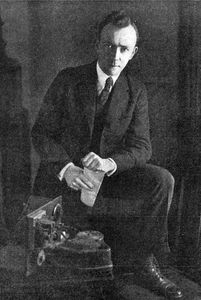
-USGS-Map-(buttonized).JPG) (CREN). CREN is the International Amateur Radio Union (IARU) member-society for Nicaragua.
(CREN). CREN is the International Amateur Radio Union (IARU) member-society for Nicaragua.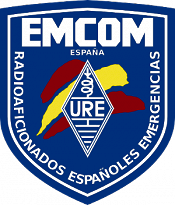 erupted for the first time in 50 years on Sunday, September 19, following an increase in seismic activity over the previous 7 days. The lava flow
erupted for the first time in 50 years on Sunday, September 19, following an increase in seismic activity over the previous 7 days. The lava flow.jpg) The latest episode of the On the Air podcast (Episode 21) features a chat with Steve Goodgame, K5ATA, about the new edition of The ARRL Handbook and how it can be useful to new hams.
The latest episode of the On the Air podcast (Episode 21) features a chat with Steve Goodgame, K5ATA, about the new edition of The ARRL Handbook and how it can be useful to new hams..jpg) The latest edition of Eclectic Tech (Episode 43) debuts on Thursday, September 23. It is a chat with Glen Popiel, KW5GP, about his new ARRL book More Arduino for Amateur Radio.
The latest edition of Eclectic Tech (Episode 43) debuts on Thursday, September 23. It is a chat with Glen Popiel, KW5GP, about his new ARRL book More Arduino for Amateur Radio..jpg) learn from the best radio-orienteers in the US," said ARRL ARDF Co-coordinator Charles Scharlau, NZ0I. "Winners who qualify by citizenship or residence may be selected for positions on ARDF Team US, which will travel to Serbia for the 2022 ARDF World Championships."
learn from the best radio-orienteers in the US," said ARRL ARDF Co-coordinator Charles Scharlau, NZ0I. "Winners who qualify by citizenship or residence may be selected for positions on ARDF Team US, which will travel to Serbia for the 2022 ARDF World Championships."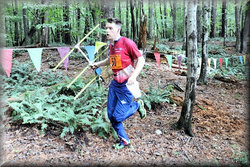
 Visit the
Visit the .jpg) amateur satellite communications work are not subject to the Export Administration Regulation (EAR). ORI was founded in March 2018 by Bruce Perens, K6BP, in order to provide a formal structure for open-source satellite work. Prior work by ORI established that open-source amateur satellite communications work was free of International Traffic in Arms Regulations (ITAR).
amateur satellite communications work are not subject to the Export Administration Regulation (EAR). ORI was founded in March 2018 by Bruce Perens, K6BP, in order to provide a formal structure for open-source satellite work. Prior work by ORI established that open-source amateur satellite communications work was free of International Traffic in Arms Regulations (ITAR)..jpg)
.jpg) IARU member-society RAST wraps up on September 23. One topic discussed was a proposed HF band plan. Among the problems the planners seek to address is the use of bandwidth as a defining transmission characteristic. Following the revision of the tools used to describe HF amateur band plans, a joint tri-region IARU committee developed a proposal for revision of the data segments of the HF amateur band plans.
IARU member-society RAST wraps up on September 23. One topic discussed was a proposed HF band plan. Among the problems the planners seek to address is the use of bandwidth as a defining transmission characteristic. Following the revision of the tools used to describe HF amateur band plans, a joint tri-region IARU committee developed a proposal for revision of the data segments of the HF amateur band plans.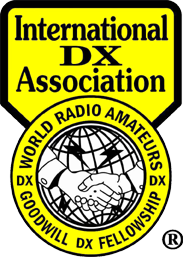 The International DX Association (
The International DX Association (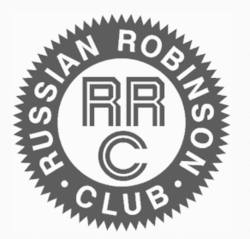 all 6-meter moonbounce activity and FT8 for terrestrial contacts.
all 6-meter moonbounce activity and FT8 for terrestrial contacts.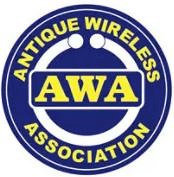
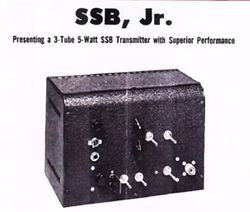 Gable credited Robert M. Moore, W6DEI, with introducing SSB to the ham radio community, through an article in R9 Magazine in the early 1930s. The technology remained more of a curiosity, however, in part because of the Great Depression, cost, and technical difficulty. Besides, hams of that era saw no real advantage to narrowband modes, since bands were not that crowded.
Gable credited Robert M. Moore, W6DEI, with introducing SSB to the ham radio community, through an article in R9 Magazine in the early 1930s. The technology remained more of a curiosity, however, in part because of the Great Depression, cost, and technical difficulty. Besides, hams of that era saw no real advantage to narrowband modes, since bands were not that crowded.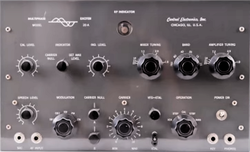
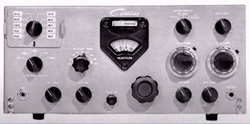
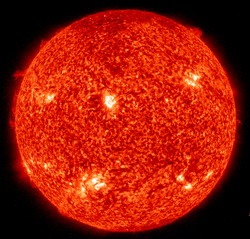 Geomagnetic indicators were higher, with the highest activity on September 17, when the planetary A index was 24 due to a minor geomagnetic storm triggered by a weak coronal mass ejection (CME). Average daily planetary A index for the week increased from 7 to 9.1, and average middle-latitude A index went from 6.9 to 8.4.
Geomagnetic indicators were higher, with the highest activity on September 17, when the planetary A index was 24 due to a minor geomagnetic storm triggered by a weak coronal mass ejection (CME). Average daily planetary A index for the week increased from 7 to 9.1, and average middle-latitude A index went from 6.9 to 8.4.







